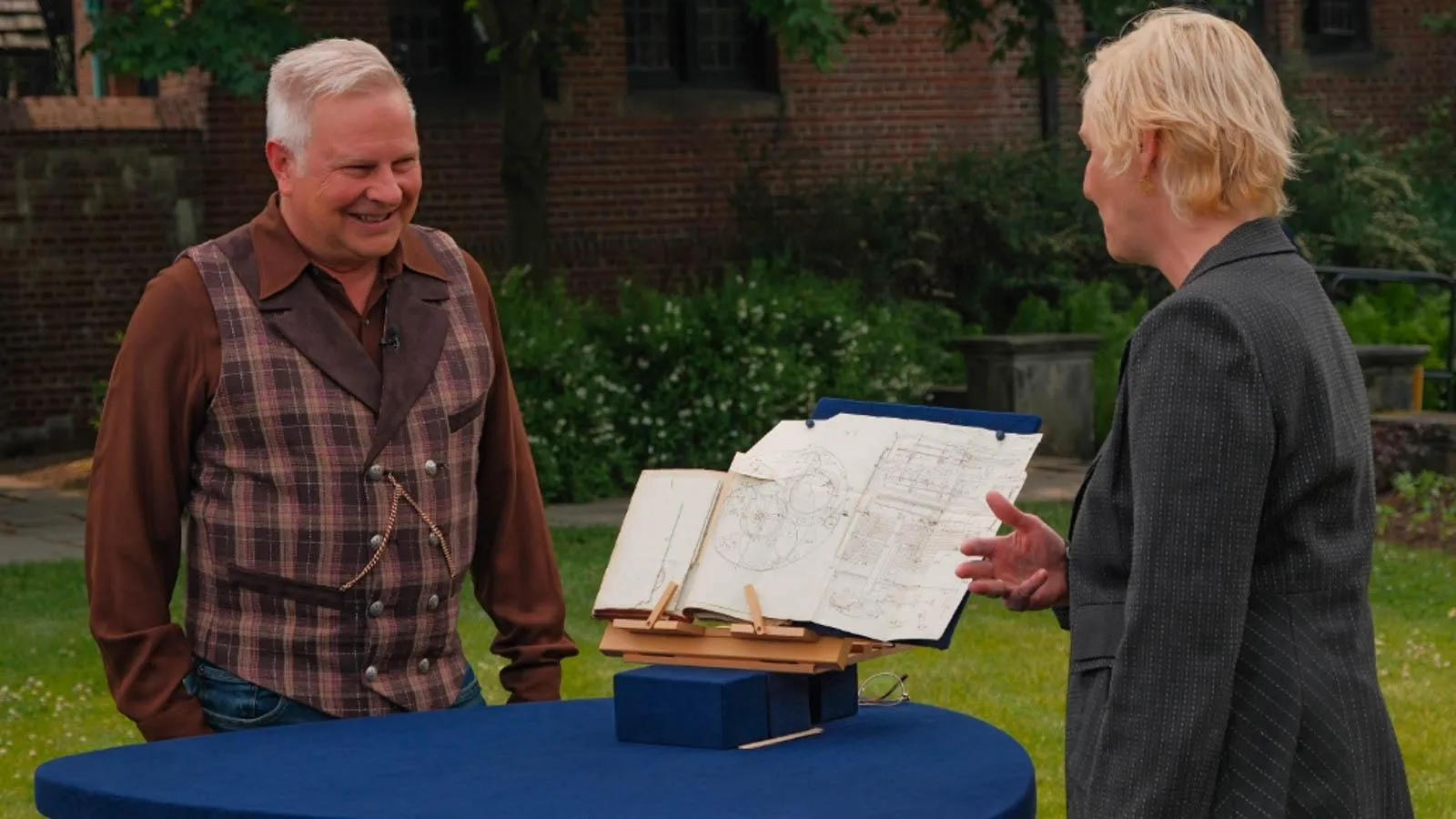GUEST: This is a print that my father acquired in 1975, and he had it in our home for all of my childhood. And about 15 years ago, he gave it to me. And we had it for a while, and then it just quite wasn't our style. So we put it in our barn, and it's been in the barn with the chickens, um, for 15 years or so. And my son just graduated from Akron U in graphic design, pulled it out of the barn and loved it. And I saw it, and I said, "I'm gonna bring it today to ANTIQUES ROADSHOW."
APPRAISER: Do you have any idea what it was that drew your father to it in the first place?
GUEST: He was an industrial designer, and he was very into graphic arts and lines and things like that, and he just loved the print.
APPRAISER: It's a poster for the 1968 Summer Olympics in Mexico. And if you look very carefully in between all the lines, you can see how this really exceptional graphic image was created around the five Olympic rings. So the poster was designed by three people. The, the chief designer for the entire look of the 1968 Mexico Olympics was the American designer Lance Wyman. He was helped by Pedro Ramirez Vazquez, who was not only an architect, but also the president of the organizing committee of the Olympics, and Eduardo Terrazas, who was a founding member of the contemporary art scene in Mexico. Not only was this sort of a psychedelic hippie motif, which was totally of the moment in 1968, but even more importantly, the designs echoed some of the Indigenous designs created by the Huichol peoples of Latin America. So this really had a connection to the old world and the contemporary world, which helped make it this universal symbol for the games. And they used the Olympic rings and, and they used the 68 number, and they built this op art image. And op art, not pop art, but op art, which is short for optical art,
GUEST: Mm-hmm.
APPRAISER: was basically this art form that played with fine lines and almost optical illusions, and the idea was to make it sort of shimmer and move as we look at it. And I think it really accomplishes that.
GUEST: Mm-hmm.
APPRAISER: The 1968 Summer Games were famous for several reasons. It was the first Olympic Games held in Latin America.
GUEST: Mm-hmm.
APPRAISER: Mexico City is at such an incredible elevation, uh, that athletes had to come before the games to train at such a high altitude.
GUEST: Wow.
APPRAISER: And then, perhaps the most famous event that happened at the 1968 Summer Olympics was when, after the 200-meter dash and during the award ceremony, when the American runners Tommie Smith and John Carlos, who'd won the gold medal and the bronze medal, respectively, were up on the podium, and they gave the Black Power salute, which is just a powerful image that resonated all across the world.
GUEST: Absolutely.
APPRAISER: If you could go back in time, say, to 2012, and you tried to sell this, you'd be able to sell it for about $600.
GUEST: Hmm.
APPRAISER: I'm very familiar with this image, and I've seen it in books, and I've seen it on the Internet. I've never seen it in person before.
GUEST: Oh.
APPRAISER: And what struck me about it was how large it was.
GUEST: Mm-hmm.
APPRAISER: And 25,000 copies of this poster were printed.
GUEST: Really?
APPRAISER: Which seems like a tremendous amount. But as they were distributed all across the world, many people chose not to keep them. Uh, it
still is very rare today. If this were to come up at auction, it would fetch between $3,000 and $4,000.
GUEST: Wow, really? Oh, my. (laughs) How exciting. Oh... (laughing)
APPRAISER: A gold medal for you for that one.
GUEST: Yay. (laughing) Thank you.












